A little-known startup is automating IVF with robots and AI. It could change infertility forever.
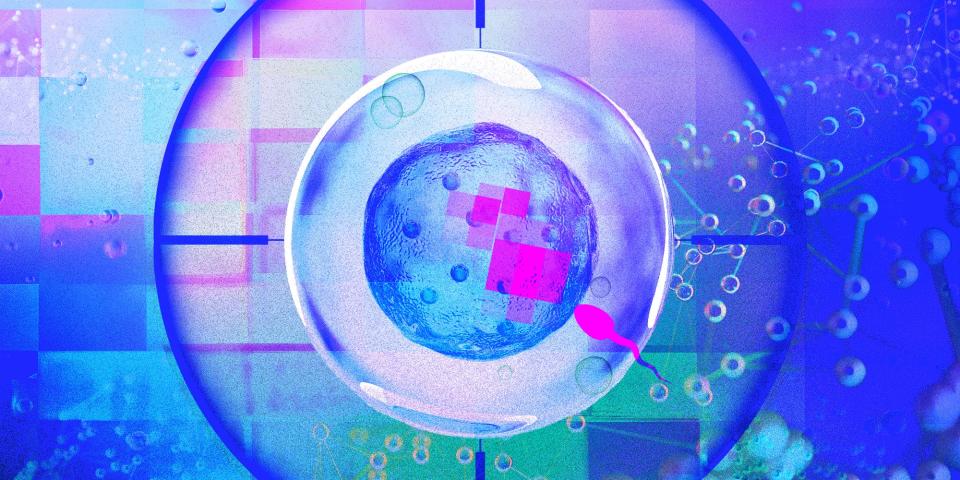
Conceivable Life Sciences is building robots and AI models to automate crucial parts of IVF.
The robots, though in the prototype stage, can suck sperm into needles and place them into eggs.
The cofounders say automation will challenge an industry rife with arbitrary decision-making.
Normally, in-vitro fertilization, or IVF, is a manual affair.
A doctor performs a small surgery, places the patient's eggs in a test tube, and passes the tube through a little window to a lab, where a scientist combines them with sperm.
At a small clinic in Guadalajara, Mexico, the process is radically different. Once that test tube makes it through the window, it's handed over to robots backed by a vast AI infrastructure. There, a startup called Conceivable Life Sciences is automating the IVF lab from start to finish. The scientists kick back and supervise.
Conceivable imagines its IVF labs all around the world, each containing lines of shiny white boxes working together in untouched harmony. For now, its work is limited to small studies and robotic prototypes. But the prototypes are working, according to Conceivable's data, interviews, and videos shared with Business Insider.
At the push of a button or two, Conceivable's robots immobilize sperm with lasers; suck them into needles; insert them into eggs they've plucked from bloody fluid; and, after incubation, give the resulting embryos free rides on a microscopic tennis racket into vials of liquid nitrogen, freezing them faster than you can blink.
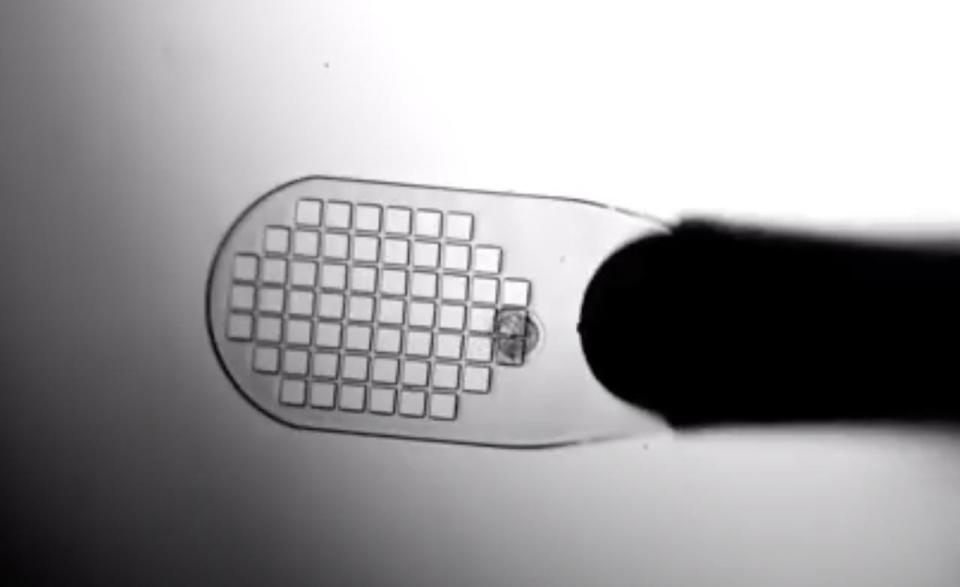
Eleven women so far have become pregnant with help from one or more of these Conceivable robots.
Along the way, the company says it has achieved several breakthroughs.
In recent months, Conceivable became the first company to robotically perform intracytoplasmic sperm injection (ICSI or "icksee"), the delicate process by which a sperm is placed inside an egg, according to Conceivable and video footage shared with BI.
In December, the famed embryologist Jacques Cohen, Conceivable's chief scientific officer, steered the robots through ICSI with his keyboard and mouse. The procedure was in Mexico; Cohen was in New York City sitting at his desk.
The embryo was transferred on February 23, leading to a pregnancy.
"We're doing transcontinental ICSIs all the time now, making them routine," Joshua Abram, Conceivable's co-CEO and cofounder, told BI in an interview. "We're the first company in the world to have ever done this."
The robots can now perform ICSI autonomously, another "world's first," according to Abram.
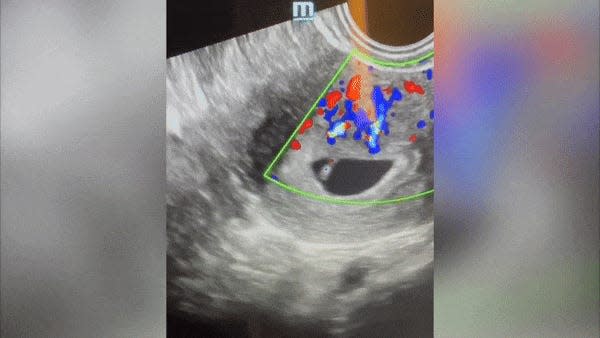
"No baby, no fee"
Today, IVF demand is surging, despite the treatment being slow, uncertain, and expensive. Millions of women live in places without infertility centers, and the clinical experts who run them are in short supply. Plus, it's punitively expensive. In the US, IVF costs as much as a new car and usually has to be repeated before it works. For many patients, this can mean borrowing heavily, if they're lucky enough to have a good credit score.
In other parts of the economy, robots have taken on a range of assignments, from moving product in Amazon warehouses to helping surgeons perform minimally invasive surgeries. That's made goods and services more available and cheaper.
Conceivable, which has raised $20 million in venture capital, is betting that robots are ready for IVF, too. Automation, the cofounders argue, will offer more dexterity in handling microscopic cells than shaky human hands fumbling with pipettes. Plus, it should collapse costs; the startup plans to charge most patients $15,000 for IVF, and only when it works, potentially saving patients tens of thousands of dollars.
"No baby, no fee," Abram said.
In interviews with BI, experts in the field were skeptical of Conceivable's plans, but not dismissive. Many like Dr. Lora Shahine, a fertility physician based in Seattle, believe automation could help the supply-demand mismatch that constrains care for a prevalent disease.
"But it must be done without compromising success rates and patient care," she said.
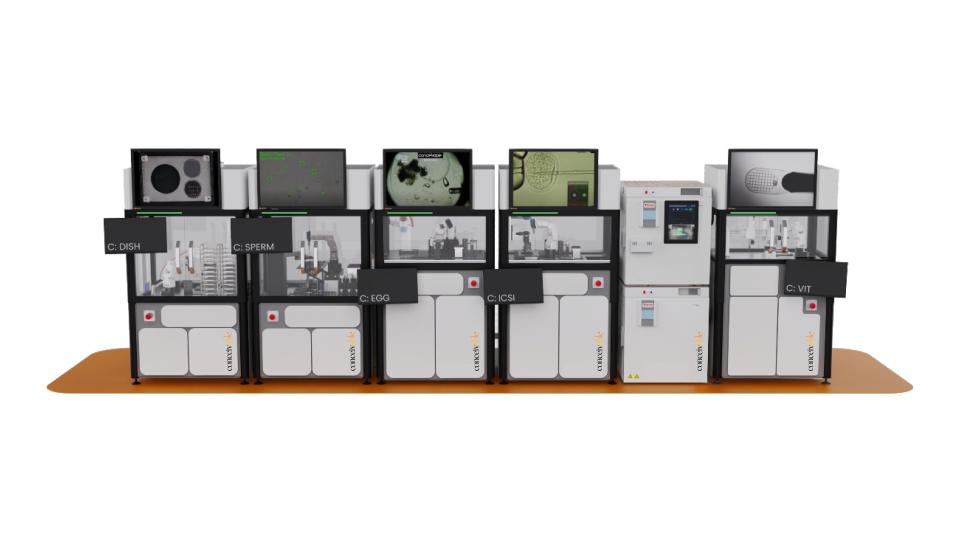
IVF's tole
Fertility care as it stands today can be just as terrifying as the notion of babies created with robots.
In 2014, Emma wasn't looking to have kids. But a blood test showed she had limited time. She felt pushed into IVF, during which her relationship buckled and broke from the strain of a miscarriage.
Emma had to make an arbitrary choice, based on not-enough information, from a dizzying cast of providers, she told BI. Implant the eggs now? Or save them for later? When is later? What if you meet someone else?
"Then, do you want to save the eggs so they can fertilize them, or do you want to have the knowledge that you have viable embryos?" Emma said of her thinking at the time. (She asked to be referred to by a different name to keep her health history private. BI knows her identity).
In 2016, Emma froze her eggs and walked away from the unwanted role of being a project manager of her own body.
At the time, she was working for Abram and Alan Murray, his longtime business partner. One day, the three of them got to talking about opportunities for startups in the healthcare industry.
"And then I remember saying, 'Well, here's a sector you might want to consider,'" Emma said.
"Milk jugs" and a Catholic Eucharist
Troubled by her experience, Abram and Murray started visiting IVF labs in 2017. The lack of automation astounded them.
In their travels, "milk jugs" (low-tech cryogenic storage tanks), sticky notes, and sharpie markers were being used to locate, label, and store eggs and embryos, they told BI. People with extensive vocational training — embryologists who oversee the lab portion of IVF — were spending much of their time squishing little drops out of pipettes.
On one visit to a premier lab, the scene was reminiscent of a Catholic Eucharist: Everyone was holding specimens with such delicacy while trying not to bump into each other.
"We kept seeing those milk jugs pop up. Milk jugs underneath desks, milk jugs underneath stairways, milk jugs in the hallways, milk jugs in rooms," Murray said. "We kept looking for the wires. How are they connected?"
"Little drop, little drop, little drop," he added. "Handwriting on the back of Petri dishes."
In 2018, they founded TMRW Life Sciences, which makes a kind of futuristic ATM machine that stores eggs and embryos more securely. The following year, Abram and Murray set their sights on the rest of the IVF process.
There was a big push on the part of pharmaceutical and life sciences companies to automate labs. Robots were improving while research needs, such as using genetic insights to make new drugs, were getting more complicated.
Curious about how it all worked, the pair toured the San Francisco lab of biotech company Invitae, where it processes DNA samples. The 50,000-square-foot facility was stuffed with robots. Conveyor belts moved trays of test tubes. Robots extracted droplets from the tubes and put them onto chips that rode into DNA-ciphering machines. There were only about three people helping move the process along, Murray recalled.
"That was a partial aha moment," he said. "There's a whole other world outside of IVF that's figured out how to use robotics."
After the trip, Murray attended lab-automation trade shows, walking from booth to booth for days at a time. When a piece of equipment had a potential use in fertility care, he wrote it down — eventually forming a kind of shopping list for the IVF lab of the future.

From prayer to AI
Half a continent away, a physician was growing frustrated by the constraints of his job.
Dr. Alejandro Chávez-Badiola became a reproductive endocrinology and infertility (REI) doctor, the kind that oversees IVF, because he was drawn to the idea of helping families reach their happiest moments. Every time he performed an embryo transfer, he prayed: "Let it be a good person."
After training in the UK, he opened his first clinic in Guadalajara, hoping to make an impact in his hometown.
When things went wrong, he wanted to know why. But some of the most crucial decisions in IVF occurred beyond the wall separating his clinic from the lab. He had a trustworthy team of embryologists, but US clinics kept poaching them, and the tools at their disposal were limited.
One year, when one of the physician's healthier, younger patients didn't get pregnant after two IVF cycles, he called a meeting with staff to ask about the quality of her eggs and embryos. To his frustration, they said they were "beautiful."
"Guys, come on," Chávez-Badiola replied. "The patient is not getting pregnant."
With the goal of making moments like this more scientific, the young doctor started working with professors, mathematicians, and engineers to put artificial intelligence to use in IVF.
They trained one AI model to rank sperm based on insights from real patient data. During fertilization, his embryologists usually picked out good-enough-looking swimmers from the Petri dish that were close to the needle. Now, the computer told them which ones to select based on movement patterns associated with the creation of embryos.
But he was running into another problem.
It didn't matter if Chávez-Badiola's AI could find the best sperm if a human couldn't reliably catch it. A typical droplet contains thousands of sperm. The right one could swim out of view of the microscope, or get squished.
The physician needed robotic assistance.
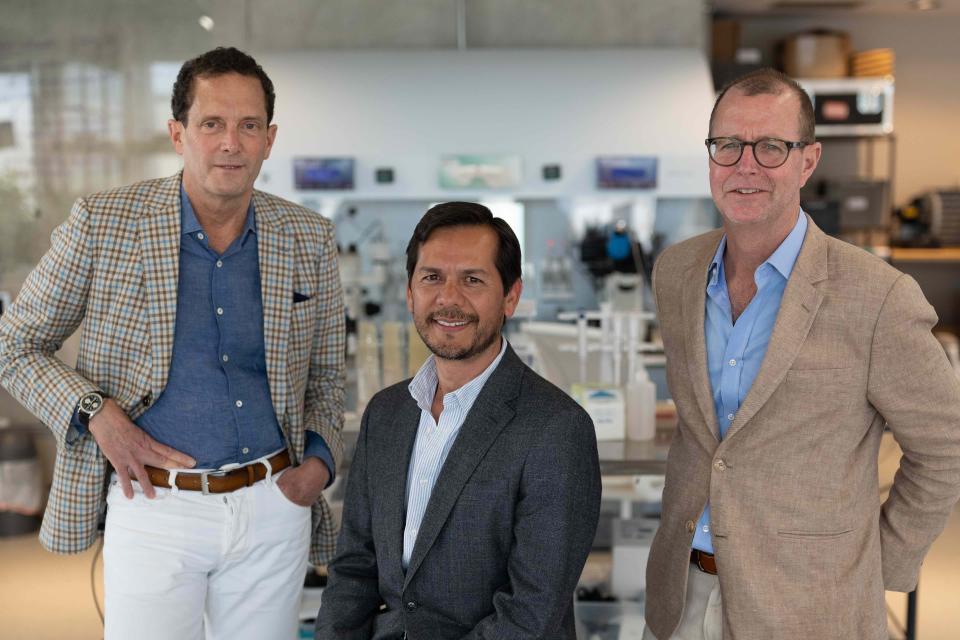
A meeting of the minds
Thanks to COVID-19, Chávez-Badiola got his chance.
In March 2020, when the pandemic ended travel to the US, Chávez-Badiola found himself stranded in London with Murray and Abram. Having run into each other before in IVF circles, they met at the bar of the Langham Hotel, where the conversation turned to the sorry state of the fertility industry.
They discussed how aging maternal populations, declining sperm counts, and other factors had increased demand for IVF. But the supply side had not responded. There are just north of 1,000 REIs in the US; competition for embryologists is fierce; and their existing manual process is slow. A standard IVF operation may struggle to retrieve eggs from 5-10 patients in a day, according to BI interviews with independent fertility doctors.
What's more, on average, women have to undergo two or three IVF cycles to get pregnant. But AI and automation, which could hypothetically improve success rates, aren't prominent. In a typical clinic, embryos are removed from the incubator in batches according to human schedules, not when best suits the individual embryos; robotics could change that.
The Langham meeting kicked off a two-year conversation in which Abram, Murray, and Chávez-Badiola rethought IVF from the ground-up, steadily convincing themselves that automation on a grand scale was possible. In 2022, emboldened by robotics and AI gains in other industries, they founded Conceivable to prove it.
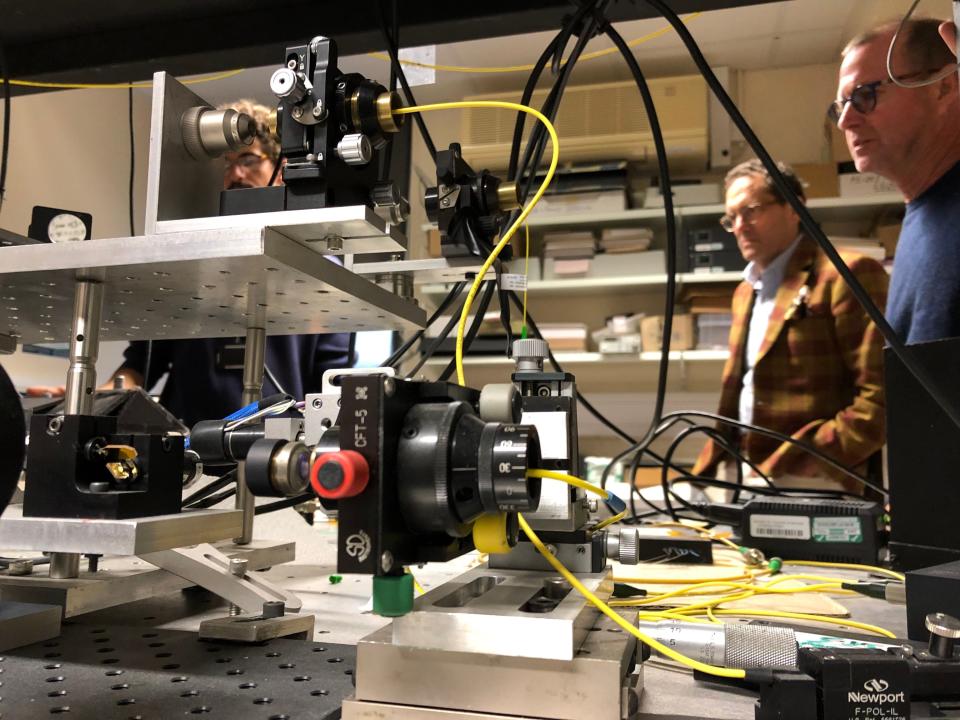
Inspiration from chip manufacturing and Tesla
The task at hand was building robots and AI capable of handling the five stages of an IVF lab: egg preparation, sperm selection, fertilization, incubation, and freezing.
For the hardware, Conceivable turned to the microscopic worlds of chip manufacturing and lab automation, buying motors that allow its roughly 20 robots to move by increments as small as five millionths of a millimeter, plus sensors and tiny tools.
For the software, Conceivable took inspiration from the likes of Tesla. Its core "object-recognition" AI systems are the same used in self-driving cars, but trained on images of sperm and eggs instead of stop-signs and pedestrians. They tell the robots where to move and how far, based on data from microscopes, 30 times a second.
"It doesn't matter if you're taking a picture of the highway from the front of a car or an egg through the lens of a microscope," Brian Bixon, Conceivable's head of product, told BI. "The first-principle thinking is the same."
For a while, the robots practiced on hamster and rabbit eggs in Conceivable's office in Guadalajara. Then engineers gradually introduced them into Chávez-Badiola's clinic six blocks down the street for a clinical study. Fifty hopeful patients with infertility, whose care is overseen by other doctors, volunteered.
The study has mostly tested the robots working in isolated IVF processes, including, lately, ICSI. The machines originally tackled ICSI in about 20 steps, each allowing for interventions. "We'd stop, look, hit the next go button, stop, look," Murray explained.
Since December, the team has been carefully linking the steps together, with the goal of full robotic autonomy.
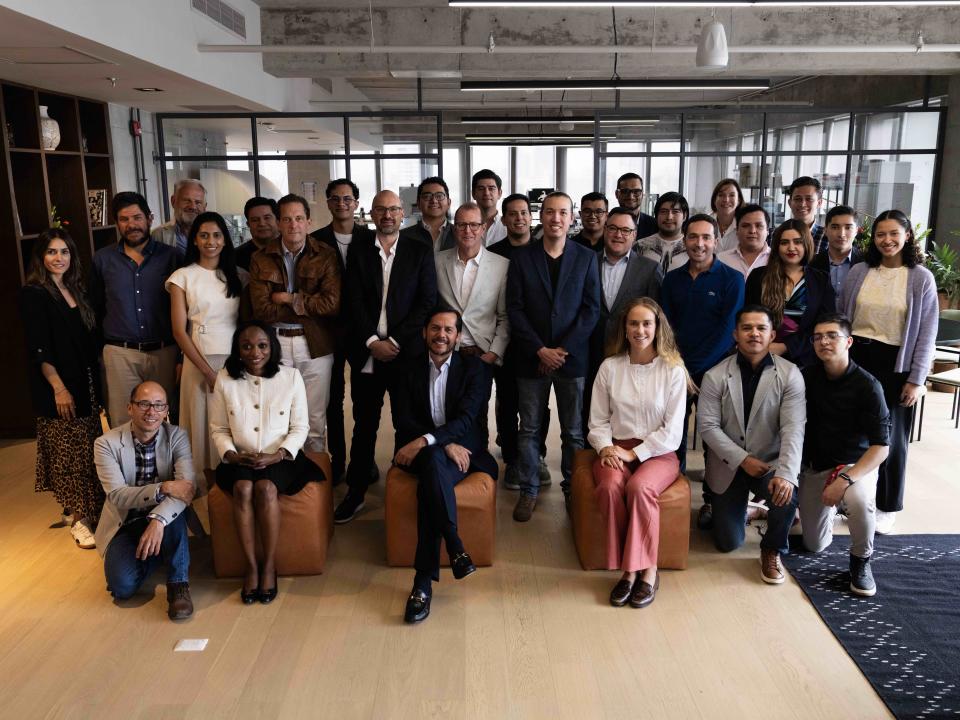
Automating conception
On March 6, Conceivable had a rocket-launch moment.
That morning, eggs from three patients were retrieved and passed through the little window between the clinic and the lab in Guadalajara. The tube of fluid was poured into a dish, which Conceivable's AI system scanned for eggs with a technology that renders images in 3-D.
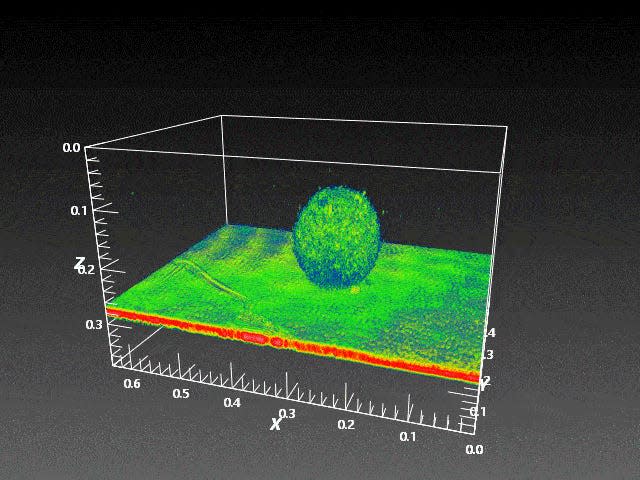
In the afternoon, half the eggs went to human embryologists. The other half went to Conceivable's setup, and the first egg was placed, along with a droplet of sperm, on a 2x2 inch square.
The square was situated underneath two needles, each held by a petite, four-axis robot. One handled the sperm; the other, the egg.
With the push of a green button on a touchscreen, the robots went about automating conception.
In the lab, there were two engineers and two embryologists. Video footage was simulcast to more experts, who whispered commentary like golf announcers, and Conceivable employees around the world, who huddled around screens. It felt like a "rocket launch," recalled Murray, who traveled to Guadalajara for the occasion.
First came sperm selection. An AI-guided laser underneath the square was supposed to zap the best one in the tail. In this case, it shot the swimmer "a little toward the midsection," Murray said. Oops. They went with a lucky runner-up.
Once the second sperm was immobilized, one of the robots sucked it inside a needle, tail-first.
Next, the other robot moved its needle close to the egg and used suction to hold it in place.
The AI-guided laser shot a wedge out of the egg's outermost membrane to clear an easier path for the sperm. Once the sperm needle was hovering right at the egg's midpoint, the first robot used "fluid dynamics" and other technical know-how to position the sperm at the very tip, Murray said.
"Are you ready to inject?" the computer asked the humans.
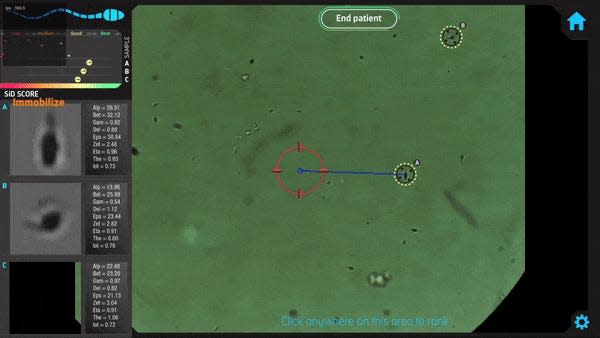
The first "embryoneer"
The answer was yes. So Gerardo Mendizabal-Ruiz, a top Conceivable engineer and VP, pushed the green button while everyone held their breath. (Colleagues now call him the first "embryoneer.")
An electrical signal vibrated a crystal motor at the end of the needle holding the sperm, which helped a tiny blade more easily cut into the egg's membrane. The needle went in, but not too far: Six algorithms prevented it from piercing the egg's other side.
Then, using a little puff of air, the robot discharged the sperm and retracted.
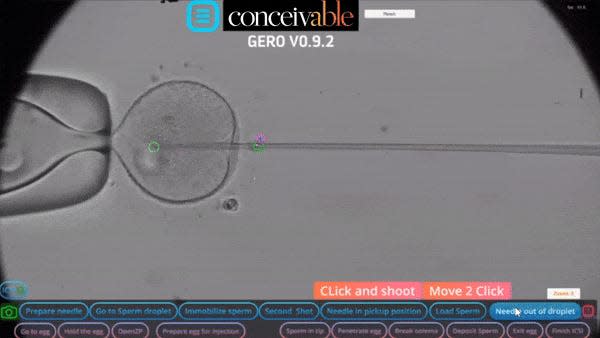
Applause erupted over Zoom and around Murray, who watched the broadcast with Conceivable engineers down the street.
Chávez-Badiola felt the tension dissipate, comparing the moment to watching his oldest son walk for the first time.
Conceivable repeated the process until it created five would-be embryos, from 12 eggs in total, slightly outperforming the human embryologists, Murray and Bixon said.
One of the embryos led to a successful pregnancy for a patient in April. Carla Patricia Barragan Álvarez, a Conceivable biologist, taped a picture of it to a whiteboard, where she keeps a personal tally of Conceivable pregnancies, like relatives on a fridge.
"Fully automatic," the description reads.
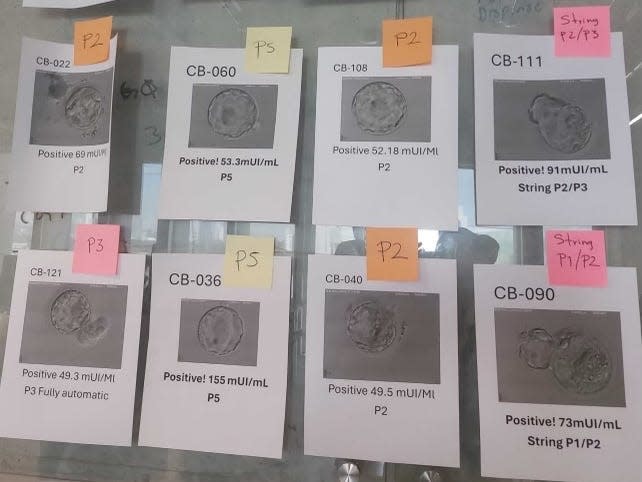
A new test
Conceivable has a long road ahead.
In Guadalajara, the new instruments have improved enough to perform above industry standards, according to the startup. But they've largely not been put to the test as a full ensemble.
This September, Conceivable plans to launch another clinical study in Mexico City, enrolling 250 patients from a nearby hospital. Similar to the Guadalajara effort, half their eggs will go through a conventional lab, while the other half go to Conceivable robots. This time, though, the robots will automate every IVF process for every specimen, end-to-end.
Conceivable will mainly be looking for how many embryos it can produce from 10 eggs. The higher the ratio, the fewer cycles of IVF are required for patients. The startup intends to publish the results.
Plugging into the system
Still, proving the technology is only step one. In healthcare, a greater challenge for companies can be plugging into the existing system.
In the short term, Conceivable plans to work with existing IVF centers to provide an alternative to their labs. With private-equity buying up IVF clinics, Conceivable will make a bid to help these investors boost growth.
"We thought the large PE-backed incumbents would be hostile," Abram said. "In fact, they're coming to us and asking to partner."
Longer-term, Conceivable plans to run independent labs in partnership with OBGYNs, who would oversee patient care leading up to the egg retrieval and lab work. REIs employed by Conceivable would oversee these cases, intervene when needed, and perform the surgeries.
Hot-button issue
OBGYNs aren't trained in the bulk of fertility care. Involving them more is a hot-button issue in the REI community, according to Dr. Eduardo Hariton, a fertility physician and executive.
Still, REIs aren't meeting demand. The community, therefore, should take the lead on designing frameworks for this kind of collaboration before the market beats them to it, he said.
"We need to have very clear guidelines about what the scope of practice is," Hariton told BI.
As for regulatory hurdles, Conceivable's path might be more straightforward.
The fertility industry is more self-policed than other areas of healthcare. Since the startup doesn't aim to sell equipment for other people to use, it would largely fall under the same regulatory scheme as lab companies LabCorp and Quest Diagnostics, Murray said.
If all goes to plan, Conceivable thinks it could be running labs as soon as 2025.
Read the original article on Business Insider

 Yahoo Sports
Yahoo Sports 
